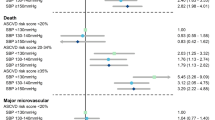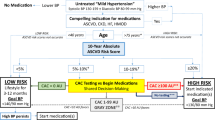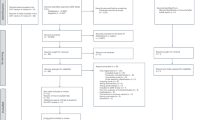Abstract
Objective: To determine the actual use of ‘statin’ therapy for primary and secondary prevention and the potential effect of using the Sheffield Table for primary prevention of coronary heart disease upon ‘statin’ use in a consultant-run Hypertension and Cardiovascular Risk Clinic.
Design: Prospective audit of the current use of cholesterol-lowering therapy and the effect of implementing the criteria used in the Sheffield Table and the Scandinavian Simvastatin Study for cholesterol lowering in ‘at risk’ patients upon statin use in a consultant-led cardiovascular risk clinic.
Setting: The Aberdeen Hypertension Clinic.
Results: A total of 1500 patients were reviewed of which 416 (27.7%) had experienced at least one clinical manifestation of atherosclerotic cardiovascular disease (CVD) and 392 (94%) of these had a total cholesterol measured of whom 298 (76%) had a total cholesterol >5.5 mmol/l. Only 11.2% of eligible patients were actually receiving lipid-lowering treatment for secondary prevention. A total of 1084 patients with no prior cardiovascular disease were identified, 97 (8.9%) were excluded because of age. Using the Sheffield Table, 92 (9.4%) of these patients were eligible for statin therapy and only six of the 92 patients were actually receiving treatment.
Conclusions: The results of this study reveal that even in a consultant-led cardiovascular prevention clinic there is a significant discrepancy between optimal evidence-based management and the actual delivery of clinical care. Seventy-two per cent and 9.3% of patients attending the clinic were eligible for statin treatment for secondary and primary prevention, respectively. However, only 11.2% of patients suitable for secondary prevention and 6.5 % of patients suitable for primary prevention were actually receiving appropriate lipid-lowering therapy. Considering the proven benefit of this form of medical intervention the results of this study are of real importance to practising clinicians and patients alike.
This is a preview of subscription content, access via your institution
Access options
Subscribe to this journal
Receive 12 digital issues and online access to articles
$119.00 per year
only $9.92 per issue
Buy this article
- Purchase on Springer Link
- Instant access to full article PDF
Prices may be subject to local taxes which are calculated during checkout
Similar content being viewed by others
Author information
Authors and Affiliations
Rights and permissions
About this article
Cite this article
Hasnain, S., Webster, J. & McLay, J. Cardiovascular risk in hypertension: implications of the Sheffield Table for lipid-lowering strategy. J Hum Hypertens 12, 469–471 (1998). https://doi.org/10.1038/sj.jhh.1000648
Received:
Accepted:
Published:
Issue Date:
DOI: https://doi.org/10.1038/sj.jhh.1000648



